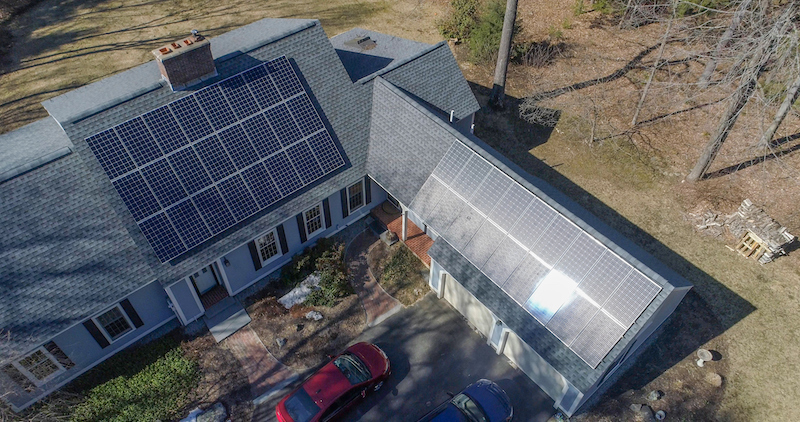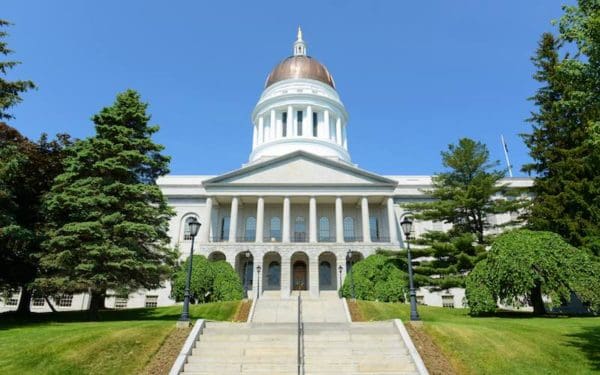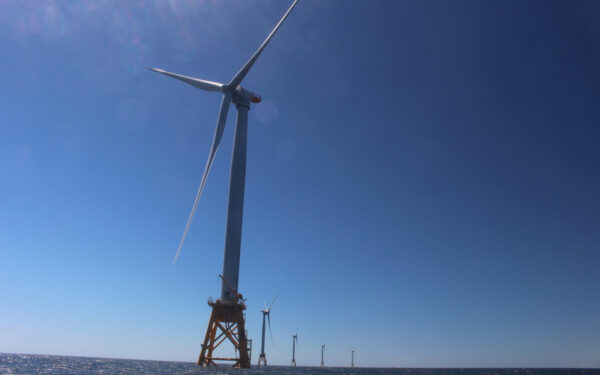
New Hampshire home with solar panels and electric cars. Photo: EcoPhotography
Although I haven’t lived in New Hampshire for long, I grew up just across the border in Maine and can unequivocally say that two heatwaves in June, with temperatures breaking into the 90s, are not typical. Because of climate change, however, what was normal when I was growing up no longer exists. We can all expect more extreme weather in the years ahead – extremes that hurt our health, the environment, and our economy.
Despite the crisis, New Hampshire is the only New England state not to have passed binding laws that require cuts in climate-damaging emissions. Not only have we not mandated climate action, but our State Energy Strategy urgently needs updating.
State regulators just announced that they might be updating this strategy – which identifies energy goals for the state and recommends policies and programs to support those goals. In the absence of binding emissions requirements, updating the strategy is critical to addressing climate change and transitioning New Hampshire to an equitable clean energy economy.
Here are five actions that New Hampshire must include in the strategy’s revision.
1. Clean Energy Means Jobs and Investments in New Hampshire’s Economy
New Hampshire must promote increased investments in wind and solar energy to harness the vast economic benefits of renewable energy.
New Hampshire’s neighbors, like Vermont and Massachusetts, have made considerably more investments in solar to date. As a result, those states experienced huge economic and job benefits. Solar investments present substantial opportunities for New Hampshire’s economy, too. Likewise, offshore wind development in the Gulf of Maine, which borders Maine, New Hampshire, and Massachusetts, could create thousands of well-paying construction, maintenance, manufacturing, and port-related jobs in New Hampshire.
2. Energy Efficiency Saves New Hampshire Residents Money
To avoid losing out on its major savings, New Hampshire needs to prioritize investments in energy efficiency.
Energy efficiency is the cheapest and cleanest energy resource. Reducing the amount of energy we use saves money for all families and businesses, not just those that participate in efficiency programs. Because these programs lower the energy we need during expensive peak times (such as during heat waves when air conditioners are cranking), everyone benefits from lower bills. Cutting the amount of energy we use also means we don’t have to rely on dirtier fossil fuels to supplement demand during these peak times.
3. Electric Vehicles Address the State’s Largest Source of Carbon Pollution
Transportation accounts for 42% of carbon pollution in New Hampshire. To accelerate the transition to electric vehicles, the state must promote creating a statewide network of charging stations through taxpayer-funded subsidies.
Currently, New Hampshire drivers are hesitant to buy electric vehicles because there aren’t enough charging stations available. And, developers are reluctant to build those stations because there’s not a big enough market for them.
As the single biggest source of carbon pollution in New Hampshire, the transportation sector must electrify – and that starts with creating the necessary infrastructure.
4. Leaving Behind Dirty Gas Means a Healthier (and Cheaper) Future
New investments in gas carry huge financial and environmental risks. By necessity, New Hampshire will soon begin transitioning away from fossil fuels, and families will start switching to electric-powered heating systems. That means the costs of utility investments in expensive pipelines will get spread across a smaller number of gas customers – burdening them with higher monthly bills. Those burdens will fall heaviest on low-income families and renters, who may be unable to afford the switch to electric heating and have less disposable income to absorb higher gas bills.
5. New Hampshire Needs Mandatory Cuts in Climate-Damaging Emissions
To address the threats presented by climate change holistically, New Hampshire must support establishing firm and mandatory targets for cutting climate-damaging emissions. Those must include achieving net-zero emissions by 2050 to avoid the worsening impacts of climate change.
If New Hampshire continues to lag behind the rest of New England by failing to cut its emissions, then the cost of the climate emergency will only increase. With mandatory targets, New Hampshire could adopt policies to rapidly transition to clean energy resources and strengthen its economy – in a way that lifts all Granite Staters.
What’s Next for New Hampshire’s State Energy Strategy?
CLF is urging state leaders to adopt these five actions in its revised Energy Strategy. But the agency that oversees the strategy – the Department of Energy – still needs to decide if it will revise the strategy at all. Unfortunately, they could take our’s and others’ feedback and decide to do nothing with it. You can help us urge the Department of Energy to act by sending them a letter supporting the importance of these five revisions.
If state leaders act on these five recommendations, it will show that Governor Sununu and the state’s agencies understand the need for urgent climate action and policy reform. And that could create momentum for binding climate legislation in New Hampshire – meaning all of New England would finally have the tools needed to tackle this growing crisis.




